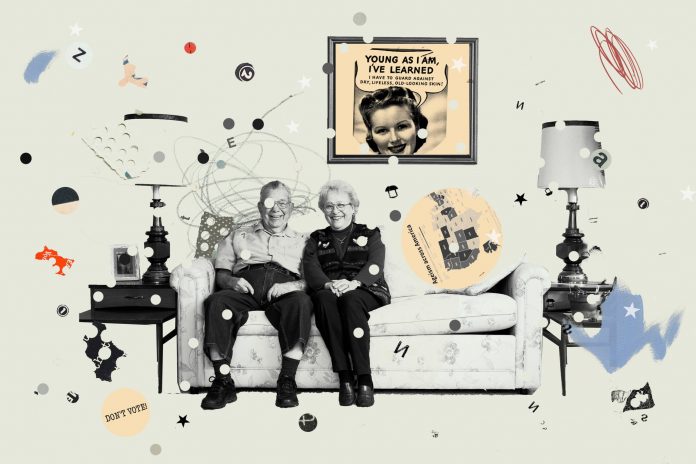by Paula Span, The New York Times, April 26, 2019
https://www.nytimes.com/2019/04/26/health/ageism-elderly-health.html?ref=oembed
When internalized by older adults themselves, ageist views can lead to poorer mental and physical health. The forms ageism often takes is pervasive employment discrimination, biased health care, media caricatures or invisibility. With negative stereotypes, older people have a higher risk of dementia. They have greater accumulations of plaques and tangles in the brain, the biomarkers of Alzheimer’s disease, and a reduced size of the hippocampus, the part of the brain associated with memory.
The World Health Organization has invested half a million dollars in research. Four teams around the world are collecting and assessing the available evidence on ageism — its causes and health consequences, how to combat it, and how best to measure it.
The researchers analyzed 64 studies, most conducted in the United States, involving 6,124 participants, from preschoolers to young adults. The investigators classified about a third of the programs studied as intergenerational, meaning they created contacts between young and old that, in theory, could lessen prejudice. Another third or so were educational, teaching facts about aging as a way to challenge stereotypes and myths. The remainder combined both approaches.
Almost universally, after such interventions, participants showed significantly less ageism on attitude tests and greater knowledge of aging than comparison groups that hadn’t taken part. The combined educational and intergenerational approach proved the most effective. The message is loud and clear; ageist attitudes don’t seem as baked in as we think.
There’s a lot of social acceptance of ageism. Although studies have found that children as young as three or four already hold ageist ideas, now we have research showing that we can overcome it.
I thought it was interesting that a combined approach of educational and intergenerational activities was most effective at combating ageism. I will be sure to keep this in mind as I develop my design brief. I wish this article had mentioned some of the health benefits of intergenerational interaction to kids. Similar to how there are health benefits to seniors, there are direct developmental benefits to kids aged 3-5. I have found that much of the literature on intergenerational interaction focuses on the benefit to older adults, but there are definite benefits to kid’s social-emotional development as well.




